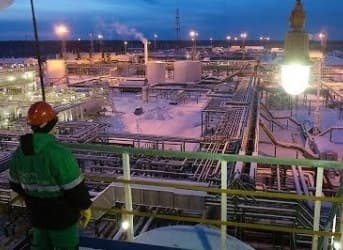The simmering standoff in eastern Ukraine following Russia’s annexation of Crimea in March has European policymakers looking for alternatives to Russian gas imports. One obvious strategy would be to boost liquid natural gas (LNG) imports, and when U.S. President Barack Obama visited Europe last month, officials lobbied him to open the floodgates of U.S. LNG as a way to help American allies and weaken Russia’s position.
Leaving aside the fact that LNG from the U.S. could not possibly provide immediate relief to Europe, over the long-term, Europe could certainly boost its LNG purchases as a way to avoid having to deal with an unreliable Russian source.
What would that look like? Where and how would the LNG enter Europe?
The first country that comes to mind is the Netherlands, which is a major player in the world of natural gas. It is the largest natural gas producer in the European Union (Norway produces more but is not a member of EU), and its Groningen field is in the top 10 largest gas fields in the world.
But declining production has the Dutch government trying to reposition itself as the “gas hub” of Europe, a role that would see it importing, processing, storing and trading gas to its neighbors. Its LNG import terminal in Rotterdam is one of the few ports that can handle the world’s largest LNG ships.
Related Article: Putin is Losing Eastern European Energy Gamble
Another source for LNG would be Spain. When thinking of key energy players, Spain is not an obvious choice. Its production of natural gas has been essentially nil for quite some time. Desperate to boost Spain’s moribund economy, Prime Minster Mariano Rajoy is hoping to change that, and has aggressively supported measures to allow the gas industry to begin exploration of Spain’s newfound potential shale gas reserves.
Rajoy’s government is pushing hard to overturn bans on hydraulic fracking that have been issued by several provinces, including Cantabria, La Rioja, Navarra and Catalonia. If successful, Spain could at some point in the future produce substantial volumes of shale gas. But that scenario is years away.
Where Spain does play an active role is as an importer of LNG; it is fourth largest importer in the world. Spain has six LNG import terminals already in operation. Its strategic geographic position on the Mediterranean allows it to get around half of its natural gas from its close neighbor, Algeria, and the rest from a variety of countries, including Nigeria, and Qatar. As a result, Spain is independent from reliance on Russian gas.
Related Article: Coal Increasingly Seen As Option For European Energy Security
Spain’s sophisticated natural gas infrastructure – the largest liquefaction capacity in Europe and a good distribution system – could allow Spain to come to Europe’s rescue, according to Sedigas, the country’s gas association.
“Spain has one of the safest and most diversified gas systems in Europe. We want to offer our capacity to the rest of the continent,” Antoni Peris, chairman of the Sedigas, said at a briefing on March 27.
However, Spain is not well connected to France via natural gas pipelines, which means it can’t supply the rest of Europe with re-gasified LNG. That has Sedigas pushing hard in Brussels for the European Commission to prioritize the MidCat pipeline, a proposed 109 kilometer pipeline that would connect Spain and France and carry 14 billion cubic meters of natural gas per year. The pipeline would run along the Mediterranean Coast and over the Pyrenees.
Spain has argued in favor of the pipeline for years, but France’s domestic gas industry has pushed back, stalling the project. High projected costs have not helped, but supporters of the pipeline see a window of opportunity with the renewed determination in Brussels to accelerate energy interconnections and harden Europe’s energy security.
ADVERTISEMENT
Sedigas is also hoping another pipeline will be constructed that connects Spain’s Basque country to France. If completed, it would add another 2 billion cubic feet per year in potential gas trade.
The Spanish gas association sees MidCat as a no-brainer, arguing that, with the right interconnections, Spain could go a long way toward answering the EU’s hopes of reducing its energy reliance on Moscow. “With this pipeline,” said Sedigas’ Peris, “Spain could replace 10 percent of what Europe currently receives from Russia.”
By Nick Cunningham of Oilprice.com


















